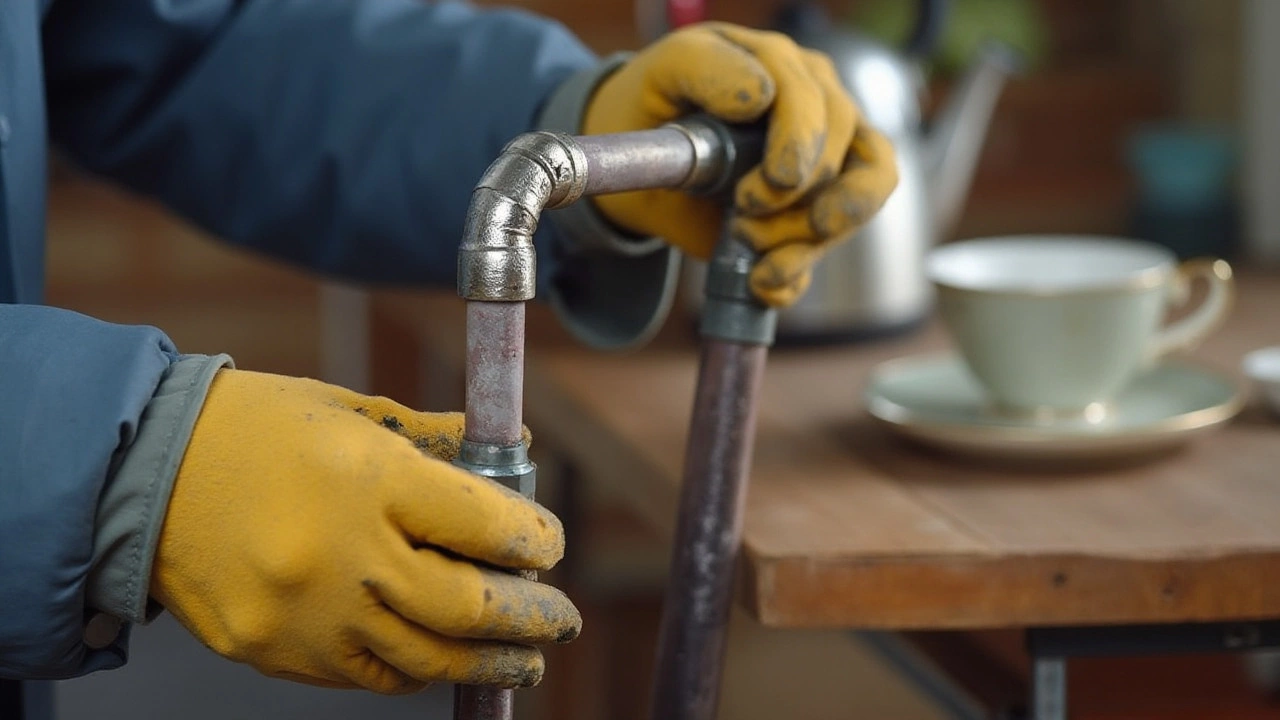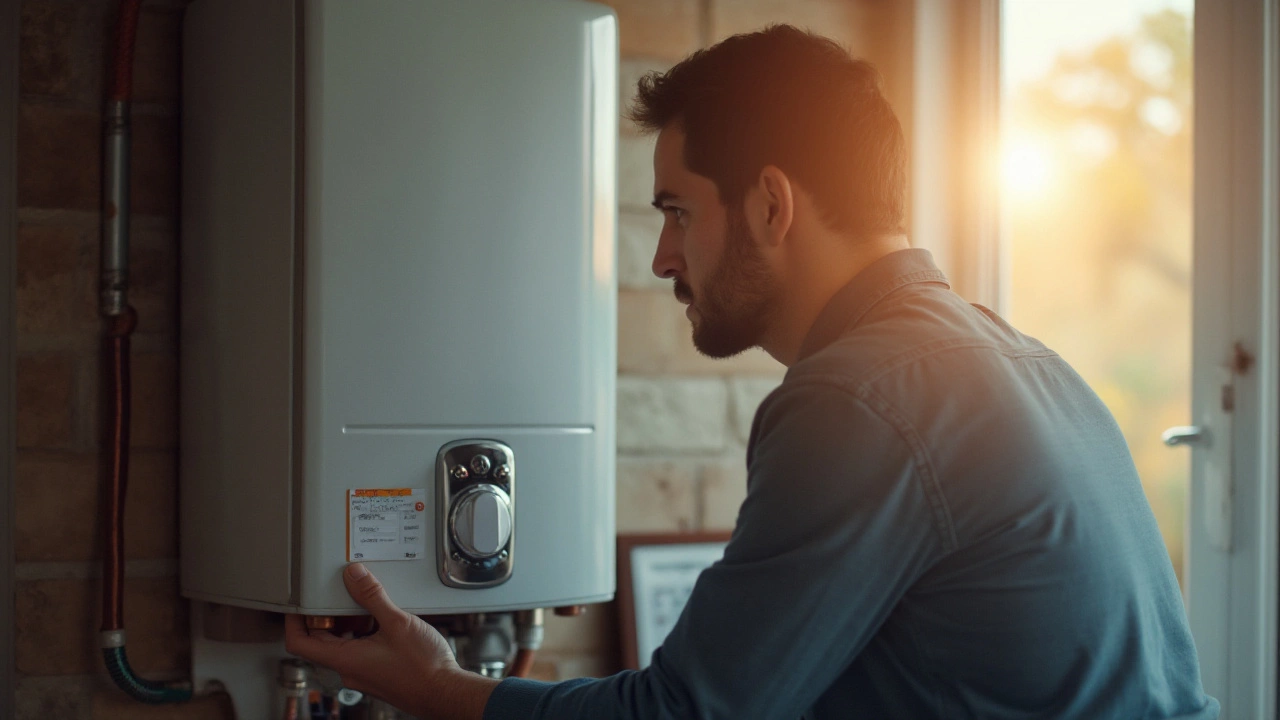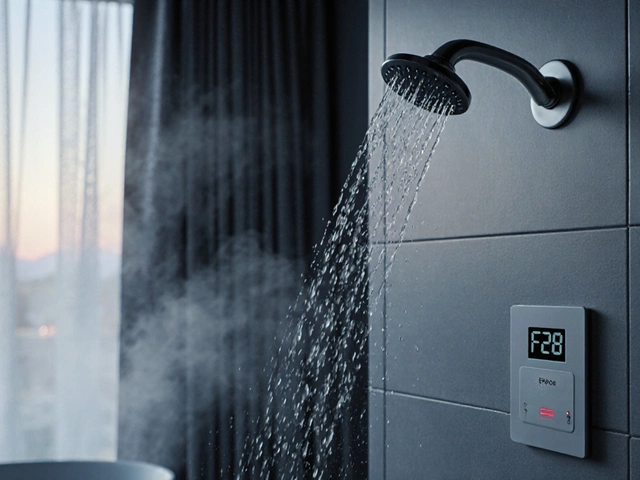Water heaters are essential appliances in any modern home, but their longevity depends heavily on one small component that often gets overlooked: the anode rod. This unsung hero does the critical job of preventing rust inside your water heater tank, extending its life and saving you from costly repairs.
In this article, we will delve into how an anode rod works, the importance of its timely replacement, and how to do it all on your own. Understanding the signals that your anode rod needs attention and knowing how to replace it can save you a lot of hassle and money in the long run. So, if you're a homeowner eager to keep your water heater running smoothly, read on to learn everything you need to know about anode rods.
- Understanding the Role of the Anode Rod
- Signs Your Anode Rod Needs Replacement
- Step-by-Step Anode Rod Inspection Guide
- Choosing the Right Anode Rod
- DIY vs Professional Replacement: What to Consider
Understanding the Role of the Anode Rod
The anode rod, often referred to as the sacrificial lamb within your water heater, plays an indispensable role in safeguarding the metal tank from corrosive elements. Typically made from magnesium, aluminum, or a zinc-aluminum alloy, this rod is engineered to attract corrosive elements present in water. Instead of eating away at the tank itself, these elements corrode the anode rod—a process known as electrochemical action. This principle ensures the longevity and performance of your water heater, keeping it functional far beyond its typical lifespan.
The concept behind the anode rod is simple yet ingenious. Every metal within your water heating system is susceptible to rust and decay owing to electrochemical reactions. Here, the anode rod enters the stage as the first line of defense. Designed to be consumed by rust first, it sacrifices itself to provide the tank with an extended life. Hence, it earns the name 'sacrificial anode.' This intentional sacrifice protects your investment and maintains the quality of your hot water over the years. From a technical point, the rod sets up a galvanic reaction more favorable than that of your tank’s metal surface.
"A key aspect of hot water system maintenance is understanding that anode rods are not optional; their role is pivotal for longevity." - Maintenance Industry Expert
When pondering the significance of the anode rod, it’s akin to having a guard on watch, tirelessly defending your appliance from silent invaders. Regular inspection and timely replacement of this rod can mean the difference between a water heater that lasts a good decade or one that needs replacing in less than five years. It's not just its presence but its material composition that matters. Magnesium anode rods, for instance, tend to be more effective in areas with softer water but succumb faster in hard water regions. This ability to adapt to different water conditions is crucial in maintaining the water heater’s functionality.
Beyond its protective trait, the anode rod also plays a role in minimizing the buildup of sediment. This impact is especially vital in regions with mineral-rich water, where scaling and sediment may otherwise reduce efficiency. It also helps prevent the water discoloration and unusual odors that can sometimes accompany corroding tanks. However, this tool isn’t without its lifespan, which oscillates based on water quality and usage frequency. It’s a part meant to be replaced when worn, reminding us that effective home appliance management is also about acknowledging component cycles.
Signs Your Anode Rod Needs Replacement
Water heaters are diligent workhorses in any household, silently ensuring hot water availability. But beneath their outer shell lies an equally hardworking component: the anode rod. This humble rod sacrifices itself to safeguard your heater from the dreaded corrosion. Recognizing when it requires a change is crucial for maintaining efficiency.
The first clue that your anode rod might be nearing its end is a distinguished change in water quality. You might notice a metallic taste or an odd smell, which suggests that the rod is no longer carrying out its duties effectively. This unwelcome alteration stems from the rod's material deteriorating and failing to adequately shield your tank from rust. A quick solution and avoiding further negative impacts become vital at this point.
Another telling sign is when you spot flakes or visible rust particles in your hot water. Puzzled homeowners often mistake these signs as issues with pipes, overlooking the root cause—the worn-out anode rod. Such particles reflect the declining protective power of the rod and should prompt immediate attention. Ignoring them could lead to significant damage over time, prompting the need for urgent intervention. Moreover, rust can easily spread, affecting other components of your water system.
If you've been hearing strange noises like clanking or popping from your water heater, this could also be an alert from the anode rod. These sounds occur as sediment builds up, something more common with ineffective rods. This sediment not only reduces efficiency but can harm the heating efficiency of the entire unit. Time is essential in addressing this; the longer you delay, the harder it becomes to eliminate sediment and avoid deterioration of your system.
"It's advisable to monitor your anode rod annually," suggests John Robinson, Plumbing Technician of 20 years. "If you ignore it, you might find yourself with a hefty replacement bill instead."
Another key indicator is the age of your water heater or the rod itself. Usually, anode rods are designed to last around three to five years. However, various factors affect this longevity, such as water quality in your area and the overall usage of the heater. The rule of thumb: the older your water heater gets, the more diligently you should check the condition of your anode rod. In areas with hard water, for instance, rods may require checks more frequently due to accelerated wear and tear.
Finally, consider performing an inspection. Removing the rod for a visual check can reveal its state more clearly. A visible reduction in size or when more than six inches of the steel core is exposed, it might be time for a replacement. Typically, the rod's appearance will guide whether a replacement is necessary or not. Armed with this knowledge, you can act promptly, ensuring that your water heater continues its function without interruption.

Step-by-Step Anode Rod Inspection Guide
Embarking on the journey to inspect the anode rod in your water heater is akin to performing a routine health check for the heart of your home’s hot water system. Generally, this inspection is straightforward for most homeowners, yet essential for maintaining the heater's efficiency. Over time, the anode rod sacrifices itself by attracting corrosive elements, ensuring these do not eat away at the tank. Regular checks help you catch potential issues early.
Start by gathering your tools: you'll need a socket wrench, a Teflon tape, and a replacement rod in case the current one is completely corroded. Begin by switching off the power supply; for electric heaters, cut the electricity, and for gas heaters, turn off the gas. Safety first. Then, shut off the water supply and use the relief valve to release pressure inside the tank. This is a crucial step to prevent any accidental splashing or leaking.
With the tank prepped, locate the hex head of the rod, often found at the top. Here’s where the wrench comes into play. With firm yet careful force, loosen the hex head and pull out the rod. Take a close look; if it’s less than half an inch thick or covered in a chalky substance, it’s time for a replacement. According to the respected
“A well-maintained anode rod can extend your tank’s life beyond the manufacturer’s warranty.” — Department of Energy, this proactive measure pays dividends.
Don’t rush to insert the new rod just yet. Apply Teflon tape around the new rod's threads to ensure a snug fit and prevent leaks. Once ready, insert the rod back into the tank and tighten it securely. After replacing, open the water supply valve to refill the tank, ensuring all air is expelled through the hot water faucet. After it refills, restore power to the system.
Completing a rod inspection shouldn’t take more than an hour for a novice. However, the impact this single check can have on the durability and efficiency of your water heater is monumental. This proactive care saves not just on heating costs but can also prevent the hefty expense of a whole system replacement. In summary, frequent checks of the anode rod are a simple yet underrated key to maintaining your water heater and safeguarding your home’s hot water supply.
Choosing the Right Anode Rod
When it comes to selecting the appropriate anode rod for your water heater, there are a few critical factors to consider that will profoundly affect both the efficiency and longevity of your appliance. Anode rods come in different materials like aluminum, magnesium, and zinc, each with its unique properties and suitability for different water conditions. Typically, magnesium rods are highly recommended for homes with soft water since they offer a stronger resistance to corrosion. On the other hand, if you have hard water or use a water softener, aluminum or zinc rods may be more suitable due to their resilience in aggressive water conditions. This is a classic case of understanding your environment to make the right choice.
Water heater manufacturers often suggest consulting the heater type to pick the right rod. Yet, aligning it with your water’s chemistry is equally important. A bit of familiarity with local water reports or a consultation with a water quality expert can offer insights into which rod might perform best. This choice is more than just plumbing supplies; it’s about ensuring the durable and efficient operation of your water heating system over time.
The right anode rod acts as the protector of your water heater, bravely taking the hits to prevent your tank from rusting. - "Home Water Heater Experts"
Size also plays a crucial role. Anode rods typically come in varying lengths, so one must confirm that the selected rod is compatible with the specific model of the heater. Universal options exist, yet confirming compatibility avoids any installation headaches. Sometimes cutting an anode rod to fit in tight spaces might be necessary, but it's essential to do this carefully to maintain its protective capabilities. Knowing how to adapt the rod without compromising its functionality can make a world of difference.
While choice materials and size are vital, it’s equally important to evaluate the price and availability of the rod. Quality and durability sometimes come with a substantial cost. Yet, investing in a robust rod can save a significant amount on unexpected maintenance in the future. Local stores often stock a selection, but checking online reviews and reputations can lead you to a more informed purchase. Replacement tips often include assessing the durability and reviews of new technology in anode rods, such as powered anodes that don’t sacrifice themselves but still offer corrosion control.
Make sure you take into account these practical nuances when choosing an anode rod. This not only ensures a reliable hot water supply but also protects your investment for many years. A step like this prevents simple misstep occurrences to immensely costly repairs down the road. Knowing the right materials, understanding the water conditions and seeking expert guidance when necessary can spare homeowners from frequent frustrations, turning an anode rod selection to a less daunting task while adding a shield of protection to your state-of-the-art water heater.

DIY vs Professional Replacement: What to Consider
Tackling the replacement of a water heater's anode rod can be both an exciting and daunting task for a homeowner. While the idea of saving money might make DIY seem attractive, there are important factors to weigh before rolling up your sleeves. First off, consider your comfort and skill level with plumbing tasks. Have you dabbled in household repairs before? Do you have the essential tools? Installing a new anode rod involves working with water and electricity, so a precise understanding of both systems is vital. Missteps can lead to more significant issues, such as leaks or even electrical faults. If you're someone who thrives on the challenge and is meticulous with instructions, DIY might be up your alley.
Benefits of DIY
Going the DIY route offers the benefit of saving costs associated with hiring a professional. A typical callout fee for such services could set you back quite a bit, and if you're already feeling the pinch with rising utility bills, cutting expenses seems sensible. Besides saving money, there's a certain satisfaction to be drawn from successfully completing home improvement projects. Watching a YouTube tutorial and then navigating your project can empower and increase your confidence in handling future household repairs.Why Hire a Professional?
But before you decide, let's take a closer look at what hiring a professional entails. These folks bring years of experience and technical expertise. They speed up the process and ensure that the job is done correctly. Professional plumbers know the intricacies of plumbing systems and can spot potential issues that might not catch your eye.An experienced plumber once said, 'What seems simple can become quite complex quickly.' And it's true—what begins as a straightforward task could become a puzzle if you lack experience.
Another aspect worth considering is the value of time. The professionals tend to have the right parts on hand or know exactly where to get them, whereas you might end up bouncing around stores. They can also handle any unexpected issues on the fly, which can be a real time saver. Then there's the warranty aspect to think about. Many will offer guarantees on their work, providing added peace of mind. Perhaps the most significant upside of hiring professionals is that you will not have to worry about potential damage that can lead to even more costly repairs in the future.
These variables make the decision a nuanced one. Whether you decide to take on the task yourself or enlist expert help, ensuring your water heater is running efficiently and effectively is the priority. Weighing in these considerations can pave the way for an informed decision.




